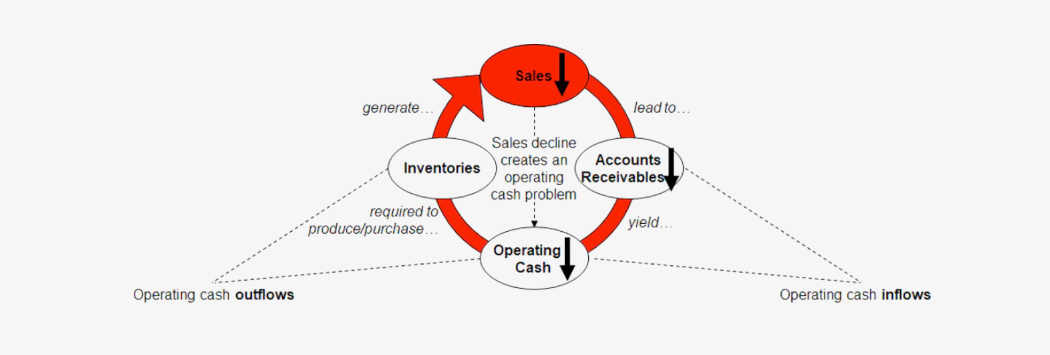Survive - Part 1
The Covid -19 pandemic has transformed the macroeconomic variable in a blink. It has shaken global economies, the human race and disrupted everyday lifestyle. It has shaken up the world with a shocking 14.3 million cases in more than 188 countries. By the end of April, 3.9 million people were under some sort of lockdown let it be a curfew, quarantine or a national shutdown in order to curb the virus. Naturally, this has sent severe shocks to businesses worldwide, disrupting local and global supply chains, trade and putting millions of people employed by these businesses at economic and health risk.
With globalization playing its part, it is safe to say that the entire world has been affected, including every economy no matter the size. This disruption has challenged the modern trade theory which states each economy should focus on what they are good at. But this pandemic is forcing us to revisit this theory and forcing governments to think about protecting key industries. Even the businesses are forced to think beyond brick and mortar and omni-channel distribution.
Markets during Covid-19
It is no surprise that bankruptcy has been widespread during the pandemic. Even big shots such as Sears, JCPenny and Hertz in the US are under severe financial pressure. Furthermore, industries such as automobiles and electronics have been abruptly closed and forced to pull back their productions. Even the mobile giant Apple, has pushed back their release of the latest iPhone, something which has never happened before.
Nonetheless, there are endless questions businesses must find logical answers to such as, ‘how to take care of employees?’ ‘how to run business during the time of lockdown?’ and so the list goes on. When will things go back to normal? This question lingers in our minds as we are forced to accept the new norm. However, the real question is, how can we recover from this?
Survive
There is no doubt that “the new normal” is not just a trending hashtag but a reality that is here to stay. So, what is your survival plan? Here are the key two steps that could help you get started;
- Manage and Expedite Receivables
We are aware that the cash conversion cycle is severely disrupted, but one can take steps to receive payments in real-time. One needs to consider all the key assumptions that will feed into the cash flow projections. Let’s face it; you need as much operating cash as possible now more than ever since short-term challenges need to be addressed.It is imperative to be compassionate, and not to compromise on your A/R collection efforts.

The salient steps:
- Get your basics right, generate accurate and timely invoices to get paid 2x faster.
- Active communication with key clients will help you receive payments in the earliest.
- Ease your customer end and open all avenues of payment gateways to accept payments from any bank account.
- Convey the message to your team regarding how important it is to know when customers are anticipated to pay and regularly review aged debtor schedules.
- Send automatic payment reminders for recurring payments. If possible, charge late penalties for delayed payments to avoid stagnant cash flow in the current times.
- Your cash flow forecast is the fuel for your business. Therefore, refresh your cash flow insights regularly. Invest in SaaS products which helps you establish transparency.
In such unprecedented times, businesses must have a robust framework for managing cash flows.
One such way is calculating the cash buffer days, which give an estimated insight into how long a firm can function without injecting new cash.

This is a tool which can help firms steer their way through the cash crisis by identifying, planning and forecasting their company’s immediate cash situation.
- Automation Matters, Think Beyond Four Walls
As you may be aware, the rules of automation, according to Bill Gates are thus:
“The first rule of any technology used in a business is that automation applied to an efficient operation will magnify the efficiency. The second is that automation applied to an inefficient operation will magnify the inefficiency.”(Stancombe, 2015)
This statement identifies the growing need for automation in today’s economy. On the other hand, former Chief of Staff for President Obama, Emanuel also advised,
“You never want a serious crisis to go to waste. And what I mean by that is an opportunity to do things that you think you could not do before”(Giambruno, 2020)
Henceforth, we observed that many companies in Pakistan decided to take the opportunistic approach towards recovering their business. This statement is a clear indication of the rising demand of Finja Business’ SAAS product, which digitizes core functions for any size of business in Pakistan. Indeed, COVID-19 has pushed many organizations to invest in automation. All the while they are also managing resources to become more resilient toward future challenges. Nonetheless, below are some functions which Finja Business digitized for many industries such as retail, education, logistics and so on;
Believing that automation is the necessary step towards a progessive economy, Finja has taken it upon itself to help companies navigate their way to survival mode. To no one’s surprise, business owners are walking on the path towards digitizing business functions since the long-term effects of Covid-19 are unforeseeable. Perhaps automation is the new norm and should be initiated into the firm’s recovery plans. Read More For Details.
By Kainat Chaudhry
Speak to an expert who can walk you through the way Finja Business can benefit your specific situation
Sign Upto get access for Finja Business instantly

